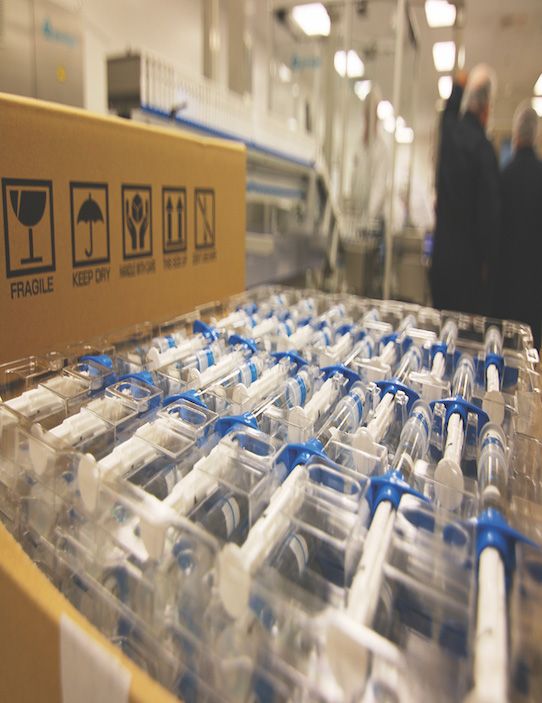Pharma pricing and antitrust law
US courts fail to clarify when pricing may violate antitrust laws
With US sales of close to $300 billion dollars during 2015, the pharmaceutical industry is both a vital part of the national economy and an intensely competitive business. As in any competitive business, price competition, including discounts and rebates, can be an important part of a pharmaceutical executive’s responsibility.
Competition in the pharmaceutical industry can be complex as well as intense. Branded drugs compete with generics. Broad product portfolios compete with narrower portfolios or even individual drugs. One drug may have some FDA-approved indications that overlap with those of another drug, as well as some indications that do not overlap. Manufacturers sell directly to hospitals and physicians, as well as to group purchasing organizations. Intermediaries such as pharmacy benefit managers can influence competition with their own rebates and formulary selections. All this means that pharmaceutical executives seeking to create a competitive value proposition must consider many changeable elements.
Unfortunately, a series of antitrust decisions by the influential US Court of Appeals for the Third Circuit has clouded the rules governing price competition. Because of these decisions, even prices above cost may create antitrust risks. Even though the US Courts of Appeals for the Sixth and Ninth Circuits have disagreed with the Third Circuit, decisions of the Third Circuit are especially significant to the pharmaceutical industry because the Third Circuit has jurisdiction over New Jersey, Pennsylvania, and Delaware. These states are home to many pharmaceutical companies, and comprise a large market for the pharmaceutical industry. Lawyers representing antitrust plaintiffs are well aware of circuits presenting favorable legal precedents.
The Third Circuit’s precedents tend to be friendly to plaintiffs alleging antitrust violations based on product pricing. For example, in 2003, the Third Circuit ruled in LePage’s Inc. v. 3M, 324 F.3d 141 (3d Cir. 2003)(en banc), that 3M had violated the antitrust laws by paying volume rebates over a large portfolio of products. LePage’s argued that the portfolio rebate program undermined its ability to compete against one of those portfolio products, 3M’s “Scotch” brand transparent tape. Even though 3M’s prices were above its costs of production, the court considered these “bundled discounts” akin to a “tying arrangement” — which makes one product available only on the condition that the customer take other products — and thus held the discounts illegal under the antitrust laws.
Since the antitrust laws are intended to promote competition, and especially price competition, the LePage’s decision has received considerable criticism. For example, in its 2007 Report to Congress, the bipartisan Antitrust Modernization Commission criticized LaPage’s as being “too vague” and “likely to chill welfare-enhancing bundled discounts or rebates.” “Lower prices,” the Commission continued, “may harm a rival but benefit consumers.” Thus, businesses attempting to comply with the LePage’s test might tend to play it safe by avoiding aggressive discount or rebate policies, especially if multiple products are involved. The US Courts of Appeals for the Sixth and Ninth Circuits have also been critical of LePage’s.
More recent decisions by the Third Circuit have narrowed LePage’s, but have not yet provided clarity on when pricing structures will pass muster under the antitrust laws, especially when considered with other competitive activities. In 2012, in ZF Meritor LLC v. Eaton Corp., 696 F.3d 254 (3d Cir. 2012), the court observed that the Supreme Court’s decisions on price competition since LePage’s have established that above cost product pricing is always, or virtually always, allowable. Heeding these Supreme Court decisions, the Third Circuit announced that its LePage’s ruling in 2003 must be read narrowly, and limited to situations in which a multi-product seller offers a bundled discount in competition with a single product seller. The court also said that an antitrust challenge based solely on pricing practices would be judged on whether the defendant’s pricing was above its costs.
In response to these Supreme Court precedents allowing aggressive price competition, antitrust plaintiffs now add allegations of other exclusionary conduct to their complaints about aggressive conduct, and these additional allegations can be successful. Indeed, in the 2012 ZF Meritor decision, the Third Circuit ruled for the plaintiff based on the plaintiff’s allegations that the defendant had used its monopoly position in addition to its pricing policies to force customers into long-term exclusive agreements. These agreements, the court ruled, were anticompetitive.
The Eisai/Sanofi ruling
Then, in May of this year, the Third Circuit appeared to move a step closer to clarifying its antitrust pricing law by rejecting a claim by Eisai that Sanofi’s volume discounts on Lovenox violated the antitrust laws. Eisai, Inc. v. Sanofi Aventus U.S., LLC, 821 F.3d 394 (3d Cir. 2016). Eisai argued that Lovenox was approved for more indications than its competing product, Fragmin, and that some of those unique indications made Lovenox highly desirable for hospitals and group purchasing organizations. As a result, Eisai argued, the different indications for Lovenox made the volume discounts tantamount to the multi-product discount rejected in LePage’s. Eisai alleged that a hospital could never completely switch from Lovenox due to the unique indications Lovenox had obtained, and that a hospital purchasing even a small amount of Eisai’s product would lose substantial discounts that Eisai could not reasonably replace. Eisai admitted that Sanofi’s net pricing was above Sanofi’s cost, but argued that it was foreclosed from competing against Lovenox at many hospitals.
Even though the Eisai case, unlike LePage’s and ZF Meritor, focused primarily if not exclusively on pricing practices of a single product, the court missed an opportunity to clarify when aggressive pricing practices, standing alone, violate the antitrust laws. The court recognized that “when pricing predominates over other means of exclusivity,” such as “when a firm uses a single-priced product loyalty discount or rebate to compete with similar products,” the court will find the conduct illegal only if the seller’s net price is below its cost.
Unfortunately, however, the court deemed this “price-cost test” inapplicable to Eisai’s allegations, apparently because Lovenox had more indications than the competing products. On that basis, Eisai argued that Lovenox should be treated as multiple products, and Sanofi’s pricing structure treated as a “bundled” discount on multiple products rather than as a single product discount. The court analyzed Eisai’s claim as one for exclusionary conduct, not predatory pricing.
Even under the test for exclusionary conduct, the Third Circuit rejected Eisai’s claim. The court reasoned that Eisai had failed to prove that it was, in fact, excluded from a substantial part of the market. By failing to evaluate the case on the more straightforward and objective “price-cost” test, and authoritatively confirm that pricing decisions will be upheld if the price is above cost, however, the court prolonged the confusion about when aggressive pricing violates the antitrust laws. Future cases with similar allegations may be required to go through expensive and time-consuming discovery, and perhaps even trial, before the defendant will know for certain that its pricing structure is legal. More likely, the continuing uncertainty will temper aggressive but pro-competitive price competition.
Future direction
The good news is that the Eisai decision may show further movement of the Third Circuit toward a more objective above cost standard for evaluating antitrust pricing claims. The decision strongly suggests that the Third Circuit will approve volume discounts and rebates
(i) if they involve a single product
(ii) if the resulting net price is above cost
(iii) if the seller imposes no other restrictions.
Thus, a pharmaceutical company selling its product above cost and without explicit contractual restrictions or other actions that impede customers from purchasing competing products can have greater confidence that its prices will be deemed legal under the antitrust laws. The bad news is that the Eisai decision seems to invite future plaintiffs to challenge pricing decisions with creative theories of exclusionary conduct, which may allow plaintiffs to subject defendants to expensive and intrusive civil discovery.
The Third Circuit’s gradual movement toward a more objective and straightforward antitrust test for pricing is welcome news. Even so, executives eager to compete effectively in the complex pharmaceutical marketplace would benefit from greater clarity from that court on when, if ever, aggressive pricing standing alone will run afoul of the antitrust laws.
ABOUT THE AUTHOR

Bobby R. Burchfield is partner, King & Spalding, Washington, DC. By appointment of President George W. Bush, Bobby served on the Antitrust Modernization Commission from 2004 to 2007.
Save
Save
